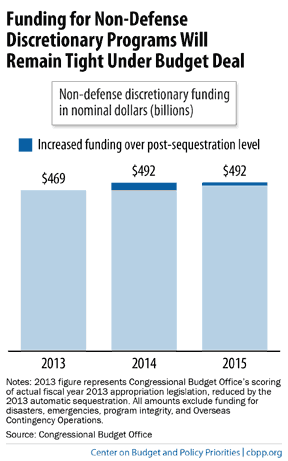BEYOND THE NUMBERS
Funding Bill Stops the Bleeding, But Low-Income Housing Still Needs Intensive Care
Last year’s sequestration forced deep cuts in federal rental assistance — at a time when just 1 in 4 eligible households receives such aid and the number of low-income renters paying unaffordable housing costs is at historic highs. In this context, the bill to fund federal programs for the rest of fiscal year 2014, which Congress has approved, is good news. But the federal government must do much more to reverse sequestration’s harm and begin to meet the severe housing challenges that low-income families faced before sequestration.
On the plus side: the bill largely reverses sequestration’s cuts in rental assistance programs. It also includes important reforms that will streamline the administration of rental assistance programs and save money.
Congress was right to lessen sequestration’s harmful housing cuts and to prioritize low-income housing for additional resources, but the bill still falls short of fully reversing the effects of sequestration. Roughly 50,000 fewer households were using Housing Choice Vouchers — which help 2.1 million low-income seniors, people with disabilities, and families with children pay for housing in the private market — by the end of 2013, compared to a year earlier, as sequestration forced housing agencies to cut their assistance. Under this funding bill, most of those agencies should be able to issue vouchers again to families on their waiting lists, but they probably won’t be able to restore all of the vouchers lost in 2013.
More broadly, the bill makes no progress in addressing the enormous challenges that existed prior to sequestration. Public housing, which provides affordable housing for 1.1 million low-income households, has a $26 billion backlog of repair needs that this funding bill won’t reduce. Homelessness also remains a persistent and costly problem. While progress has been made in some areas — such as in reducing homelessness among veterans — these gains may be at risk without additional resources.
The task of addressing these challenges remains for fiscal year 2015, when the spending limits to which Congress agreed in the 2011 Budget Control Act (and modified last fall) will continue to put downward pressure on non-defense discretionary funding (see chart). The focus now turns to whether the President’s budget and next year’s appropriations bills will make the hard priority choices to protect essential safety net programs despite the budget limits.

